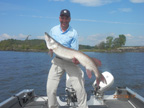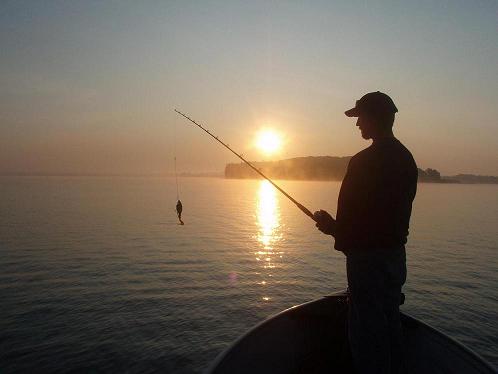|
|
Location: Minneapolis | I have a lowrance 2330c sonar. How can I most effectively use this thing for muskie fishing? | |
| | |

Posts: 2894
Location: Yahara River Chain | I still use a Zercom to find drop offs, weed edges, cribs, etc. If you turn the power up enough to get a double echo and the thickness of the bottom band will tell you how hard/soft the bottom is. A wide band means a real hard bottom, a narrow one means a soft bottom. The sonar is absorb by the soft bottom and therefore a narrow band is formed. Broken band can means weds, fish, or rock. | |
| | |

Posts: 32944
Location: Rhinelander, Wisconsin | Great sonars. Still tell the story, just don't draw it for you. | |
| | |
Posts: 112
Location: Nielsen's Fly-In Lodge, on Rowan Lake | I'm still using a flasher can't hardly find parts any more they tell you every thing if you know what you are looking at it takes time | |
| | |
Location: Minneapolis | It's been pretty easy finding drop offs, still trying to figure out weed beds/edges. All the resources I can find are about those fancy graphs. | |
| | |

Posts: 3508
Location: Elk River, Minnesota | Hiya,
With any depthfinder, the key is depth and finding structure and bottom content. The flasher can do everything you need it to...get the sensitivity set, you can identify weeds, bait pods, fish, and bottom content (as was mentioned). It takes a little getting used to, but can do a great job for you. About the only suggestion I could make on using one is take it out over structure and bottom content you know, and see what it looks like...continue to do this until you are comfortable identifying the same types of structure when you are over unknown areas....knowing the difference can be key at times...
Steve | |
| | |

Posts: 723
| I used a vexilar FL8 for years in conjunction with an eagle sonar,
it helped greatly to identify what was actually bait vs. noise or junk in the water,
and the best thing it did was show me where there was deep weeds like sand grass!
this was huge considering I always thought once you saw the weed edge end on your graph, that was the end of it.
upon further investigation with my flasher, I started fishing a lot deeper, and in turn, was contacting bigger fish more often.
like mentioned above, learn to use it well to determine soft vs. hard bottom areas,
and yes, you can see muskies on it! granted you will probably only see them in deeper water, let alone be able to identify them.
only cases ive witnessed them was sucker fishing in deeper areas. but after youve used one ice fishing and see how wide the band is for panfish, walleyes, ect,
you will know when you see mr. musky!
so, I love using a sonar, only problem is that when I bought a new Lowrance,
they both interferred with eachother. no matter what I did to get away from it.
so I quit using it.
very affective tool when used properly in my opinion.
| |
| | |
Location: Minneapolis | Thanks for the responses guys! | |
| |
|
 muskies with a flasher
muskies with a flasher muskies with a flasher
muskies with a flasher